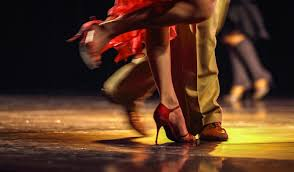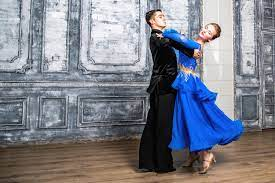There are several types of ballroom dancing, and each has its own unique style. Smooth and Standard dancers maintain a solid frame and use closed dance positions while Rhythm and Latin dancers tend to move more freely and emphasise hip action and partner interaction. Rhythm and Latin dancers typically wear flashier clothing and emphasise shifting weight from the left foot to the right foot.
Tango: This popular dance is based on Latin rhythms and is characterised by sweeping hip movements. Its fast, staccato feel and dramatic snapping head turns make it a popular choice for social dancing. Besides being a fast-paced dance, tango can also be characterised by a more elegant look and feel.

Sequence: Sequence dances are very popular and are also considered a form of ballroom dancing. Sequence dancing became a competitive sport in the 1920s, when the Frolics Club of London created the first judged competitions in the dance sport. Today, the work ethic and skill level that drove this dance form to prominence is still evident.
Salsa: Salsa dance has distinct variations originating from different areas of Cuba, Puerto Rico, New York and Colombia, for example. It is a style that grew in popularity during the 1960s and 70s. Learn more about Salsa Classes London by going to a site like RV Dance
Samba: Another popular ballroom dance is the Samba, which has origins in Brazilian culture and history. It is a lively dance with a carnival-like atmosphere. The basic step involves the leader and follower stepping forward and back. The follower replaces the weight on the right foot and follows the leader’s foot. The paso doble is another popular form of the dance.
Waltz: Another popular form of ballroom dancing is the waltz. This dance is known as the ‘backbone’ of all ballroom dances. It was first introduced to Europe in the 16th century. The waltz is a smooth, flowing dance with rise and fall movements. The steps are counted as Quick-quick-quick or 1-2-3, making it very easy to learn and perform.

Bolero: The bolero is one of the slowest types of ballroom dance. It is a partner dance that originated in Spain and was made popular in Cuba. The dancers focus on grace and elegance while dancing to music that averages around 96 beats per minute. A bolero routine has five distinct parts, each one telling a story about the dancers. Its Cuban and Spanish roots are prominently showcased during the dance routine.